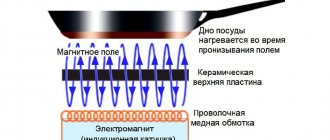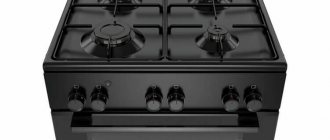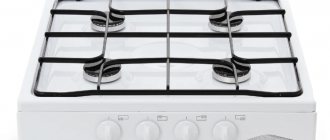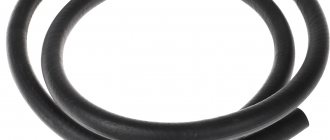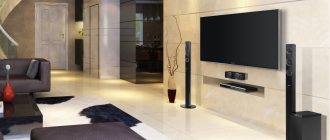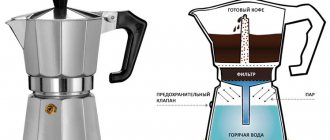Basic criteria for comparing cooking equipment
Before deciding what to choose: a hob or a stove for your kitchen, let’s outline the main criteria for the upcoming choice. Regardless of the design of the room and its size, the following factors become determining:
- design capabilities and appearance of each unit;
- dimensions and weight of the unit;
- price;
- installation conditions and technology;
- functionality and technical capabilities;
- power consumption.
Note! Only an integrated approach to purchasing kitchen appliances, taking into account all requirements and operating conditions, will allow you to make the right choice between the two types under consideration.
Criterias of choice
The hob can be portable and attached to the kitchen worktop using screws
If you are designing a new kitchen design or carrying out renovation work, then when choosing a device you should pay attention to several determining factors:
- Ease of use. Due to the convenience and ease of installation, many people choose a hob when choosing. It can be portable or built-in, which is attached to the kitchen countertop with screws.
- Practicality. Before making a choice between two devices, you should first make sure how practical the device will be in the kitchen, easy to use, effective in its operation, and also take into account the technical characteristics and other factors necessary to ensure the smooth operation of the device. The equipment must effectively cope with household tasks and meet your needs, without causing discomfort or other inconveniences when used in the kitchen.
- Advantages and disadvantages. Before purchasing, you should study the pros and cons of using an induction panel and a gas stove.
When comparing, you should pay attention to the following parameters:
- functionality;
- size;
- appearance and combination with the kitchen;
- weight of the device;
- installation technology;
- price;
- technical factors and energy consumption;
- personal preferences;
- terms of Use.
Dimensions and appearance
Gas stove
Gap between stove and cabinets
The main disadvantage of the stove is its volume, since it requires a lot of kitchen space, and the possibility of installation may be limited by the location of the gas pipeline.
Considering all these components, such a device is difficult to harmonize with the interior of the kitchen.
It is difficult to fit tightly between cabinets, resulting in gaps where dust, liquids and particulates can accumulate over time.
Induction device
The hob matches the design of the kitchen and is practical and easy to use
Compactness, light weight, attractive appearance and ease of installation are the main advantages of this equipment.
The hob will free up a lot of space in the kitchen and can be installed on almost any countertop.
It goes well with the kitchen design and is practical and easy to use. In the appropriate design, you will also need to choose an oven, which should harmoniously combine with the interior.
Easy to install and operate
Connecting a gas hose when connecting a gas stove
Connecting a gas stove is based on a complex connection of a gas hose and gas pipes. The connection must be made by gas service employees.
The greatest demand is for a gas stove combined with an electric oven, which provides greater functionality than justifies its high cost.
The hob is easy to install and operate. The built-in device simplifies cleaning the room, because, unlike a gas stove, it does not form gaps and does not accumulate debris.
The induction panel on the market is found with a glass surface, glass-ceramic or stainless steel. The glass plane is easier to maintain than stainless steel and other materials.
Functionality
Built-in induction hobs are a better alternative than conventional gas stoves for several reasons:
- Ease of use. They have a pulse ignition function, which is controlled by a control knob.
- Fast and convenient preparation. Some built-in cookers are equipped with a multi-flame function.
- Safety. Using an induction device is a safer option. Modern hobs are equipped with a function to shut off the gas supply if the flame on the equipment goes out. This innovative feature also helps you save gas.
- Additional functions. Modern appliances come with additional features such as alarm systems and timers that can be used to prevent overcooking and burning of food.
Economical
How the hob works
Some modern cooking appliances are more economical than gas burners due to their moderate consumption of electricity and other resources.
Heating elements help quickly heat up the dishes and achieve the required temperature.
This is interesting: Dishwasher power in kW - electricity consumption for one washing cycle (TOP 5)
Features of the appearance of a gas stove and hob
Every year manufacturers show more and more imagination. The color range of the equipment is amazing, and the specific shape satisfies the needs of any room shape. Considering individual models - hob and stove, we note the following points:
- Induction often looks organic and advantageous. One of the nuances is that you will have to buy an oven in the appropriate style. And this problem is not as easy to solve as it might seem at first glance. In any case, in terms of external indicators, the stove will fit perfectly into the interior and will look fresh and fashionable.
- An oven is originally a single piece of equipment that has many functions for preparing all types of food. In this case, it will be enough to simply decide on the desired variation, based on the overall stylistic decision of the kitchen.
Hob Features
If you don’t plan to use an oven, you can skip the space with an electric stove and choose a compact, stylish hob. It is mounted into the countertop, and there is plenty of space underneath for equipping kitchen drawers and installing a dishwasher. The one-piece design makes cleaning easy and fits seamlessly into any environment.
On sale today you can find older enameled models, as well as glass-ceramic options. Depending on the modification, you can choose an induction, gas or mixed system.
Advantages of an electric hob
The first plus is aesthetics. There are no rough switches or grates with burners - the heating zones are simply applied to the surface. You can place such a panel on almost any countertop, because it does not take up much space and is suitable even for a small kitchen.
Cleaning also does not take much time, because during installation all joints are carefully closed, and dirt does not accumulate there. Simply wipe the surface with a cloth to remove small stains.
Many people worry that at some point they will want to buy an oven, but will not be able to install it. But the oven can be purchased separately, and it is absolutely not necessary to place it above the hob - these two types of equipment can work independently of each other.
Another important plus is faster food preparation due to the fact that modern burners are more powerful.
Disadvantages of the hob
The first thing that stops many buyers is the price. You will have to pay a lot not only for high-quality equipment, but also for its installation. You can try to install the panel yourself, but you need to perfectly fit it to the size of the cut opening in the countertop, so that dirt does not get into the cracks later.
It is also important to properly organize the ventilation system so that during the cooking process, excess heat does not affect nearby furniture, which could catch fire.
Additional costs also await those who buy a separate gas-based panel and oven - each type of equipment will require a separate hose. Such changes will have to be coordinated with the gas service, a separate project must be drawn up and the services of a specialist must be used, since such work is prohibited from being carried out independently.
Despite the ease of care, the surface is very sensitive. Chips may appear on the enamel or glass even after one awkward movement, and grains of sugar accidentally left on the stove during heating are a direct path to cracks. Fixing any defect or problem will be expensive.
IMPORTANT! Most ceramic or glass hobs can withstand a weight of no more than 15–17 kg overall and up to 5–6 kg on each burner. So, it will be difficult to cook a lot of food for a large family at once.
Dimensions and weight of the food preparation unit
If we consider dimensions and weight as a criterion for choosing equipment, then in this case the question is “which is better?” solved much faster.
- An ordinary stove, even a new-fangled, improved model, is bulky and heavy, so you need to take care in advance about the future location of its installation and the configuration of kitchen furniture nearby. If you plan to cook often and a lot, especially when cooking for the winter, then you should remember that the stove will withstand any weight load without restrictions.
- The built-in cooking surface takes up little vertical space, is very compact, and allows for the most useful and efficient use of the space underneath. Of the minuses, we note that the maximum load on one burner is 5 kilograms, and in general for the entire area no more than 15 kilograms.
Important! Remember that if you are going to purchase an oven for built-in appliances, then compactness and space saving are not relevant in this case.
Kitchen stove - a time-tested technique
Despite the fact that the market is filled with various new products, including compact separate cooking surfaces, many users have chosen gas appliances and remain faithful to them. They have a lot of convincing arguments.
- The first, most important advantage for modern people, of a traditional gas stove is its low price. An economy class gas appliance will cost less than even the simplest option for a separate surface. And if you also include a separate oven in the price, the difference will increase by an order of magnitude.
- A gas stove does not require complex installation or kitchen refurbishment. The old stove is simply removed and a new one is installed in its place. The installation process boils down to connecting the gas hose by an employee of the relevant service.
True, there are also disadvantages. A gas stove is a bulky element of the kitchen; it takes up a fairly large area of the kitchen space. The location is limited by the location of the gas supply pipes.
It’s also no secret that the traditional device fits quite difficult into the interior of the kitchen, dividing the furniture set into two halves. It is rarely possible to install it close to the furniture; dust, water and dirt always get into the resulting gap.
Installation conditions and technology
When choosing what is easier and faster to install: an electric oven, hob or gas stove, you should consider the following points:
- An electric oven can be easily installed in any corner of the apartment without restrictions. Electric operation requires only an outlet and no additional expenses for the services of professional installers.
- To install a gas model, a clear calculation of the dimensions of the unit and the installation location and dimensions of other furniture is required. Connection and commissioning are carried out exclusively by special service employees.
Important! Combined devices require installation by professionals, since gas is the priority hazard.
- The induction cooker must be installed by craftsmen with the appropriate qualifications and profile, since they are built into kitchen furniture. In addition, it is necessary to carefully prepare the furniture itself: mark and make precise cuts so that there are no large cracks or gaps left after installing the equipment.
Advantages and disadvantages of a separate slab
Free-standing hobs are as easy to use as possible and are more familiar to the average person today. If there is a need for repairs or a change of situation, the device can be easily moved from place to place. Enameled electric stoves are famous for their good impact resistance and relatively low cost, but cleaning protruding burners is quite inconvenient. Glass-ceramic models are somewhat more expensive, but they look solid and stylish. In terms of practicality, there are no particular complaints - the coating is highly durable, and since it is absolutely smooth, keeping the panel tidy is not difficult.
We recommend: the best electric stoves for the kitchen
The advantage in matters of cleanliness here, however, is very conditional. During everyday use, any individual stove “sins” by accumulating debris and dirt not so much on the working surface, but around it: over time, spilled crumbs, coupled with settling particles of fat, create a very unaesthetic frame.
This is what you get if you sum up all the shortcomings of free-standing slabs:
- The kitchen interior does not look very harmonious - many appliances do not want to fit into a single design concept;
- Housewives often complain that the oven is too low, to which you have to bend down every now and then;
- Debris regularly accumulates behind the stove and on the sides of it.
Be that as it may, traditional electric stoves are not without their strengths:
- They are easy to install and move from place to place;
- most full-size units have affordable prices;
- to install individual stoves, you do not need to order a kitchen set according to an individual plan (and this is not only additional hassle, but also significant expenses);
- Classic appliances are easier and cheaper to repair.
h2>Advantages and disadvantages of a built-in stove
Built-in format models combine ergonomic design with exemplary quality of service - at least, this is how manufacturers position them. In terms of their ultra-modern appearance, these slabs are truly superior to conventional ones, but the most important trump card of the “built-ins” is undoubtedly their compactness. New-fashioned units are designed in such a way that the oven is isolated, and the hob can fit into the worktop. Many buyers find a “stand-alone” oven very convenient - it can be installed at a convenient level so that you don’t have to lean towards the door every time.
The dimensions of built-in stoves are, correctly, standard (60 cm in width, 50-55 in depth and 55-60 in height): manufacturers make sure that the appliances fit any kitchen set. In contrast, free-standing models show a wide range of sizes, so if chosen incorrectly, they can greatly clutter up the kitchen space.
So, let’s summarize the advantages of built-in models:
- They create a single workspace, without cracks and gaps, where all kinds of rubbish constantly get stuck;
- “unload” the kitchen, which is especially important for owners of small-sized housing;
- separate elements - a hob and an independent oven - can be fixed at any height;
- easy to clean: the flat surface, free of convex burners, is easy to clean.
Now let's analyze the disadvantages:
- Built-in stoves, as a rule, are installed “forever”: moving such equipment is quite problematic;
- the position of the device must be thought out in detail: it must be coordinated in advance with the position of the hood;
- if the hob fails, the new panel will have to be selected with special care so that the size completely matches the previous format;
- purchasing and connecting “built-ins” is very expensive - a regular electric stove is several times cheaper.
Functionality and technical indicators
It is difficult to accurately answer the question of which stove is better, an electric one (not a hob) or a gas one. In this case, the comparison depends on each person's personal priorities.
- Ease of use and functionality are often determined by the type of energy consumption. Gas ones allow you to cook dishes as quickly and naturally as possible, and also have the ability to accurately set the flame in the burner. Electric models are somewhat inferior in terms of cooking speed and temperature accuracy, but they are many times safer.
- The speed of heating and cooling of the burners, and therefore the power of the built-in panel, depends on the principle of operation and the material of execution. A limited number of dishes in terms of weight, volume and type are often prepared on such a surface. Of all the options, built-in surfaces are called the safest, since in the absence of dishes the oven does not heat up. In addition, modern models have diverse functions - timers, auto shut-off, saving energy consumption.
To quickly decide, it is important to remember the following nuances:
- If you have a choice: a stove or a built-in panel, but you want to buy an electric oven without an oven, then in this case, take the hob type.
- If you are choosing between a gas or built-in surface, if you have a family and a love of cooking, then it is better to give the palm to the classics of the genre.
Pros and cons of the hob
Hobs are in demand and popular today, thanks to their modern design and compact size. The advantages of the equipment include:
- choice of power type – gas, electric, combined;
- Possibility of integration into kitchen furniture;
- high power burners;
- convenient control using sensors.
We recommend: How to choose the perfect house slippers?
However, such models have a number of disadvantages. A hob costs a lot of money and must be installed by a qualified specialist. Such equipment must be used together with a hood. Due to the lack of ventilation, nearby furniture will become very hot. The panel itself can deteriorate due to overheating. It should be taken into account that one burner can withstand a weight of no more than 6 kg, so it is unlikely that it will be possible to heat a bucket or tank of water. Induction models require the use of special cookware.
Reviews on the operation of hobs
Elena M., Novosibirsk:
“After renovating the kitchen, we decided to purchase a hob, since at the same time we were changing the furniture set. We chose the Weissgauff HV 32 B model for 6,500 rubles. The coating is made of glass ceramics. The panel has 2 working burners. There is protection against children. The device is controlled using sensors. Additional functions include a timer and residual heat indicator. For the money this is an excellent purchase. I really liked the design and convenient controls.”
Maxim A., Izhevsk:
“My wife asked for a built-in hob as a gift for March 8th. At her request, I purchased a gas model “Hansa BHGI631301” for 12,600 rubles. We have been using this purchase for several months now. During this time, the design, functionality and quality were assessed and no shortcomings were found. My wife says this panel is perfection. The model is made of stainless steel, so it will fit any set. The panel is equipped with four burners. There is electric ignition and gas control. During our use, the kitchen assistant has never let us down and looks like new.”
Sergey N., Orekhovo-Zuevo:
“We needed a small hob because the standard one didn’t fit. As a result, we chose “LEX GVG 430 BL” at a price of just over 11,000 rubles. I did the installation myself and didn’t find anything difficult about it. This model has 3 burners, which is enough for a family of two. It is very easy to care for, just wipe with a damp cloth and then wipe dry. There are no streaks left on the glass. The model is equipped with cast iron grates, electric ignition and gas control. Controlled by rotary switches. The panel is suitable for main and bottled gas; it can also be chosen for a summer residence.”
Generalized advantages and disadvantages of induction
Based on all of the above, let’s summarize.
Advantages of this type
- Heating occurs faster than with gas, for example, 5 liters of water boils on induction in 4 minutes, and on gas in 12;
- 4 times more economical than heating element;
- during cooking, you can lay a towel under the frying pan, or simmer dishes without a lid;
- dishes and furniture are not smoked;
- many programs and timers;
- temperature regulation without accidentally extinguishing the fire.
Disadvantages of the induction model
- relatively fragile surface;
- special utensils or adapters are required;
- Aluminum and copper utensils are not suitable;
- for certain models you will have to derive a separate phase.
Advantages and disadvantages of gas stoves
Let us summarize all the information collected about gas stoves:
Advantages of gas
- there are no problems with purchasing specialized utensils;
- no dependence on power outages;
- often the price of gas is lower than that of electricity;
- There are no problems with wiring.
Disadvantages of this type
- increased risk of explosion;
- the need to legitimize any movement of the unit;
- cleaning the gas model is more labor-intensive;
- Gas smokes when burned, so an exhaust hood is needed.
Which option to choose depends on personal preferences and the capabilities of your wallet. Weigh the pros and cons, and you will definitely make the right choice.
Advantages and disadvantages
Any technique has positive and negative qualities - this is an axiom. Gas products are still in high demand due to the price, which is the lowest on the household appliances market, and also because blue fuel is cheaper than electrical energy. Installation and connection are carried out by specialists in similar equipment.
The disadvantages are that it is necessary to ensure the laying of a gas pipeline, there is an increased risk of fire, since an open fire is used, and the fuel itself is explosive. The difference between a standard stove and a panel is very significant: the first does not sit well next to furniture, because the body gets very hot, and there are gaps between the stove and cabinet furniture where dust and small debris accumulate.
Electrical surfaces made of glass ceramics have the following positive qualities:
- Aesthetics of appearance.
- The contours of the heating zone are marked on the surface.
- No clunky grilles or rotary switches.
- They are simple and easy to use and have small dimensions.
- The induction version has increased comfort, high efficiency and safety.
Among the disadvantages:
- the cost is much more expensive, this is especially true for induction panels;
- the working surface is quite capricious: as soon as a grain of sugar lands on the heated part of the stove, a small crack immediately appears; maintenance requires special detergents;
- user inattention can lead to chipping and breakage of such a surface;
- Repairs are very expensive, especially replacement after even a small area is broken.
The difference in coverage is huge, each has its own nuances, as well as flaws, so you need to weigh the pros and cons so that the chosen model does not disappoint you during operation.
